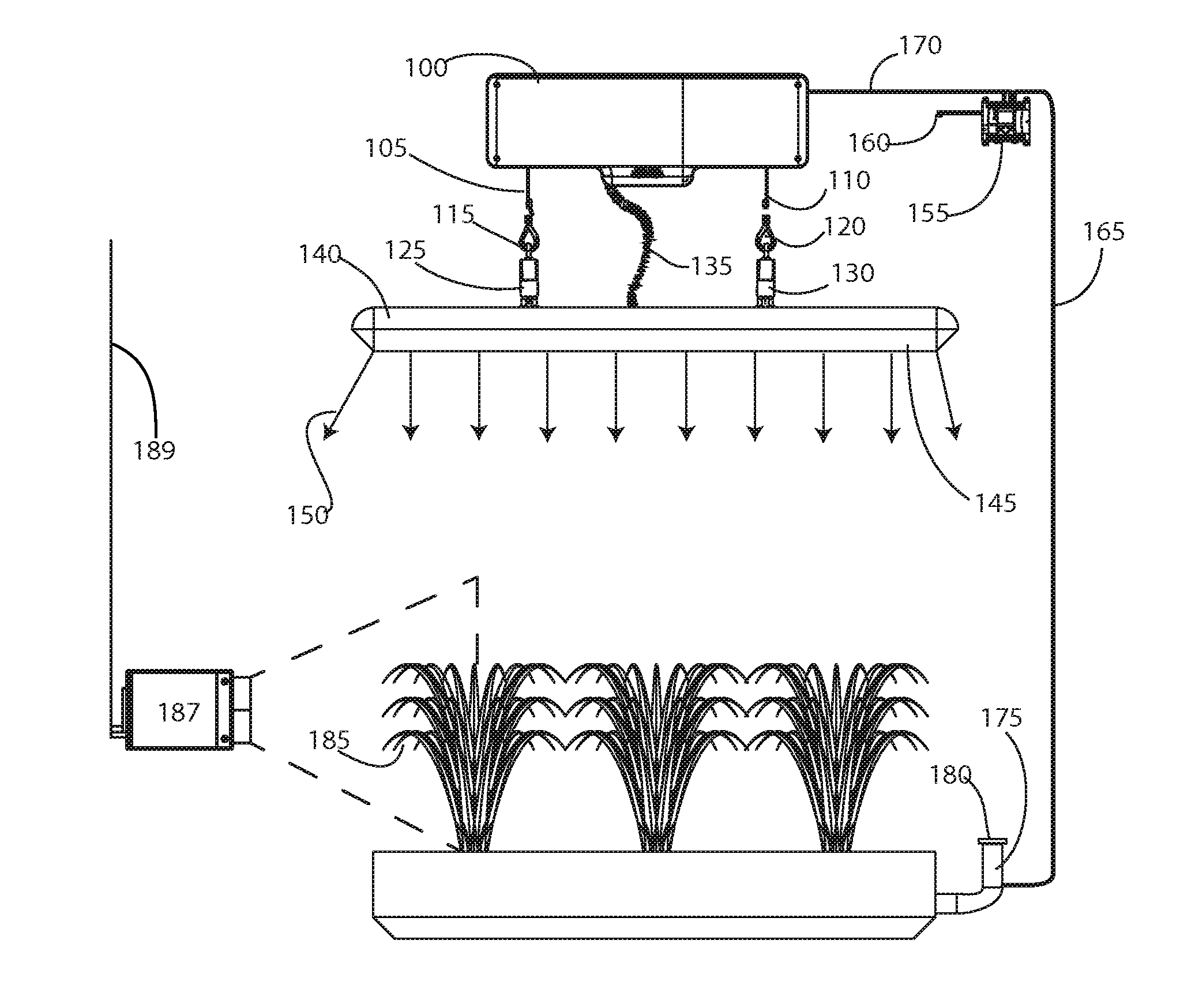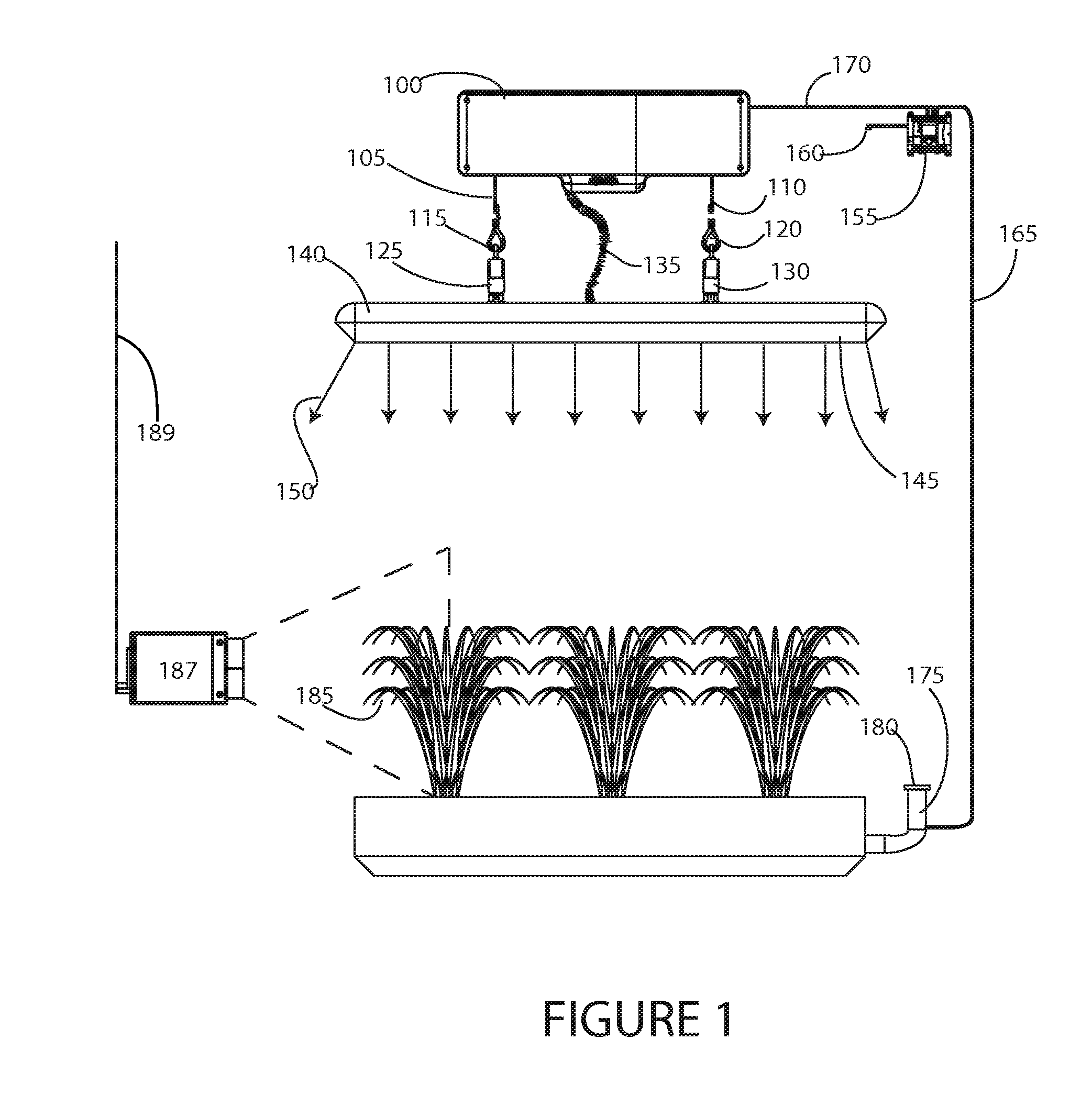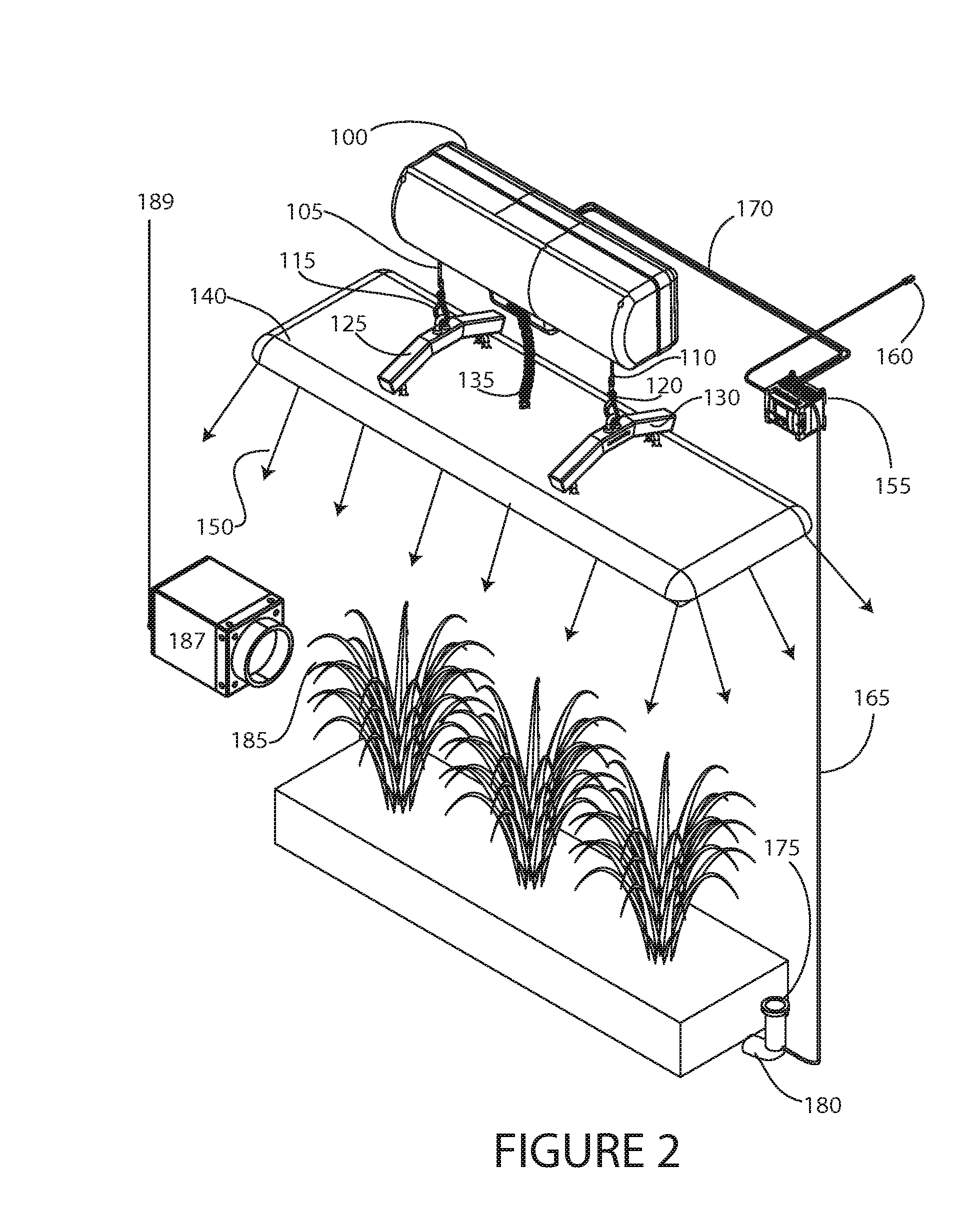LED grow light with automatic height adjustment
a technology of led grow lights and height adjustment, applied in the field of horticulture, can solve the problems of red wavelengths, limit productivity, and inconvenient supplemental lighting, and achieve the effect of reducing inefficiency and avoiding supplemental lighting
- Summary
- Abstract
- Description
- Claims
- Application Information
AI Technical Summary
Benefits of technology
Problems solved by technology
Method used
Image
Examples
Embodiment Construction
[0031]With reference to FIGS. 1 and 2, views of an exemplary grow light system according to principles of the invention is conceptually illustrated. The system includes a hoist 100 having a plurality of tethers 105, 110 (e.g., cables, such as wire rope, or nylon or polyester webbing) that are wound and unwound on spools or drums. The hoist controllably raises or lowers a load, in this case a light assembly 140. The hoist may be configured to raise and lower a support structure such as a pipe to which a plurality of light assemblies are attached.
[0032]As discussed below, the hoist 100 contains a controllable electric motor (e.g., a servomotor) and a gear box to simultaneously rotate two spaced apart spools. The servomotor is a rotary actuator that allows for precise control of angular position, velocity and acceleration. It includes a suitable motor coupled to a sensor for position feedback and may also include a braking device, as discussed below.
[0033]Each tether 105, 110 is couple...
PUM
 Login to View More
Login to View More Abstract
Description
Claims
Application Information
 Login to View More
Login to View More - R&D
- Intellectual Property
- Life Sciences
- Materials
- Tech Scout
- Unparalleled Data Quality
- Higher Quality Content
- 60% Fewer Hallucinations
Browse by: Latest US Patents, China's latest patents, Technical Efficacy Thesaurus, Application Domain, Technology Topic, Popular Technical Reports.
© 2025 PatSnap. All rights reserved.Legal|Privacy policy|Modern Slavery Act Transparency Statement|Sitemap|About US| Contact US: help@patsnap.com



